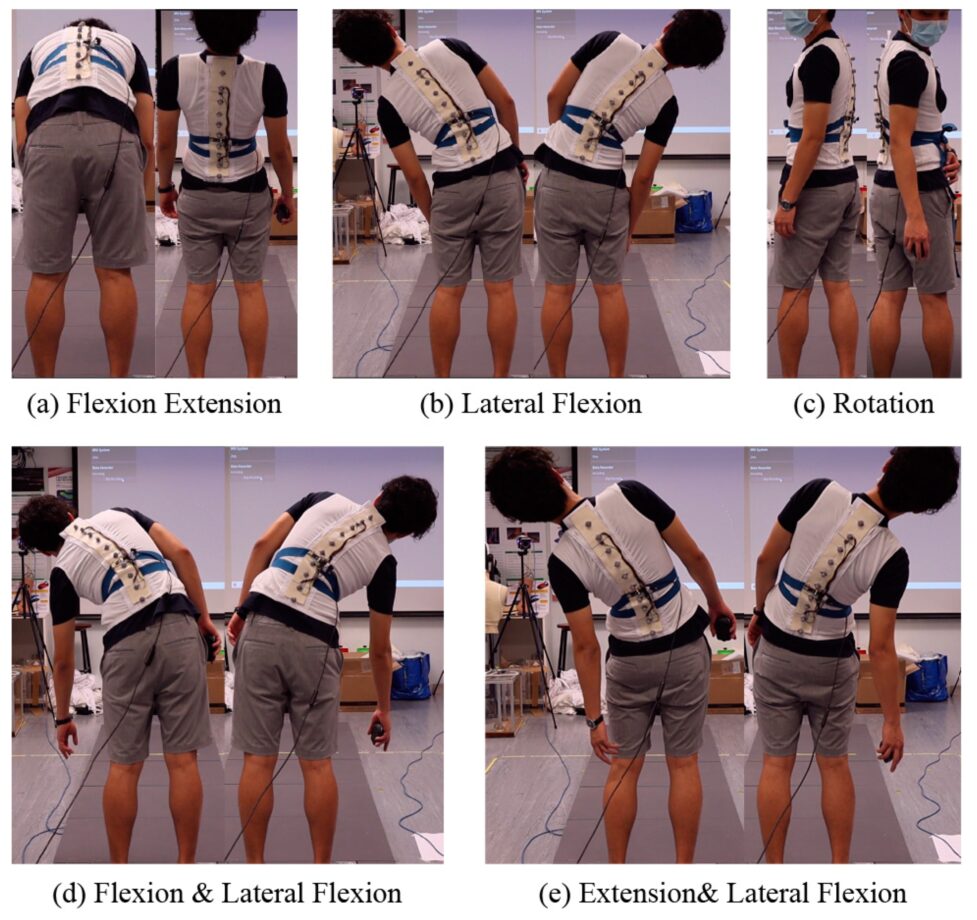The spine is an important part of the human body. Thus, its curvature and shape are closely monitored, and treatment is required if abnormalities are detected. However, the current method of spinal examination mostly relies on two-dimensional static imaging, which does not provide real-time information on dynamic spinal behaviour. Therefore, this study explored an easier and more efficient method based on machine learning and sensors to determine the curvature of the spine. Fifteen participants were recruited and performed tests to generate data for training a neural network. This estimated the spinal curvature from the readings of three inertial measurement units and had an average absolute error of 0.261161 cm.
A Neural Network Approach for Inertial Measurement Unit-Based Estimation of Three-Dimensional Spinal Curvature

Testing
Testing
